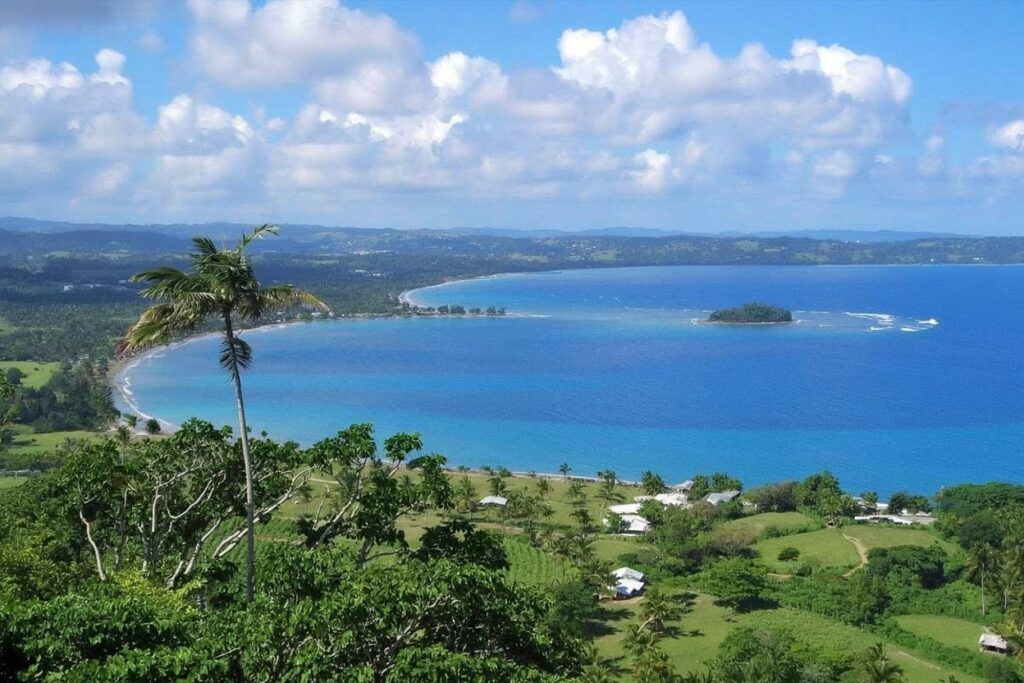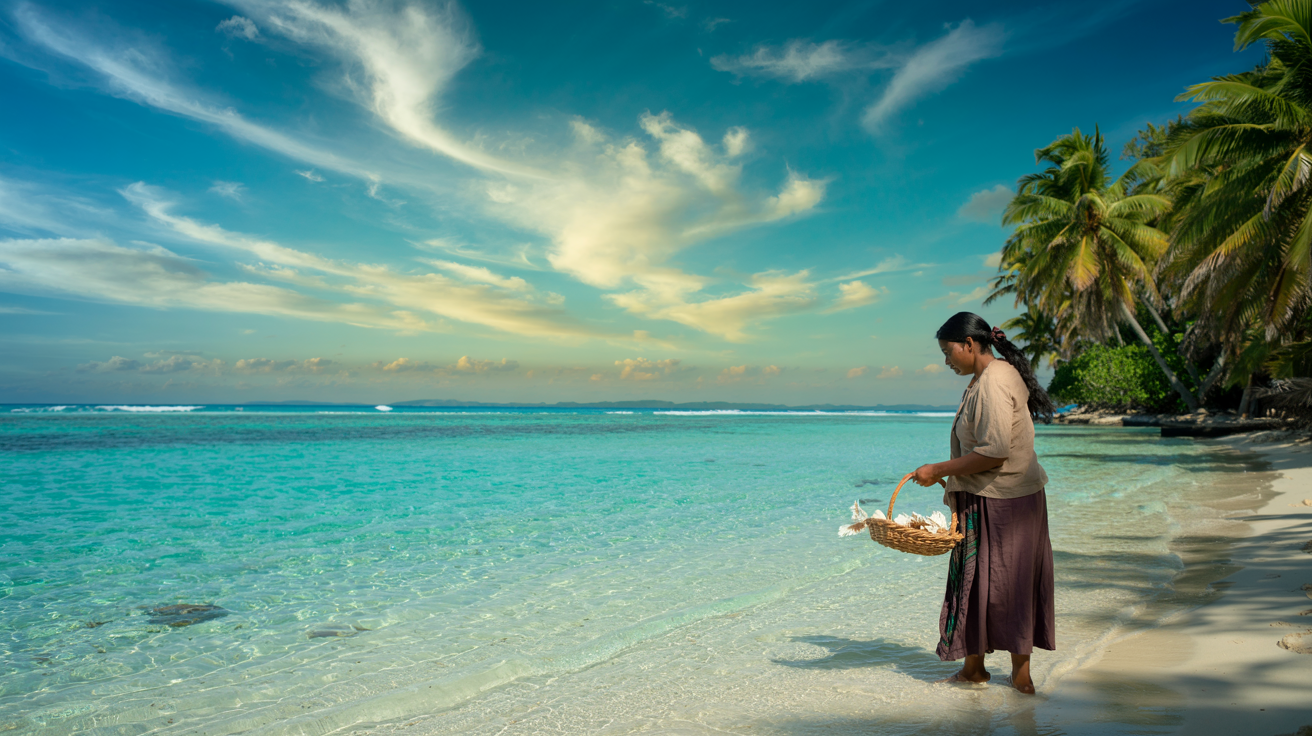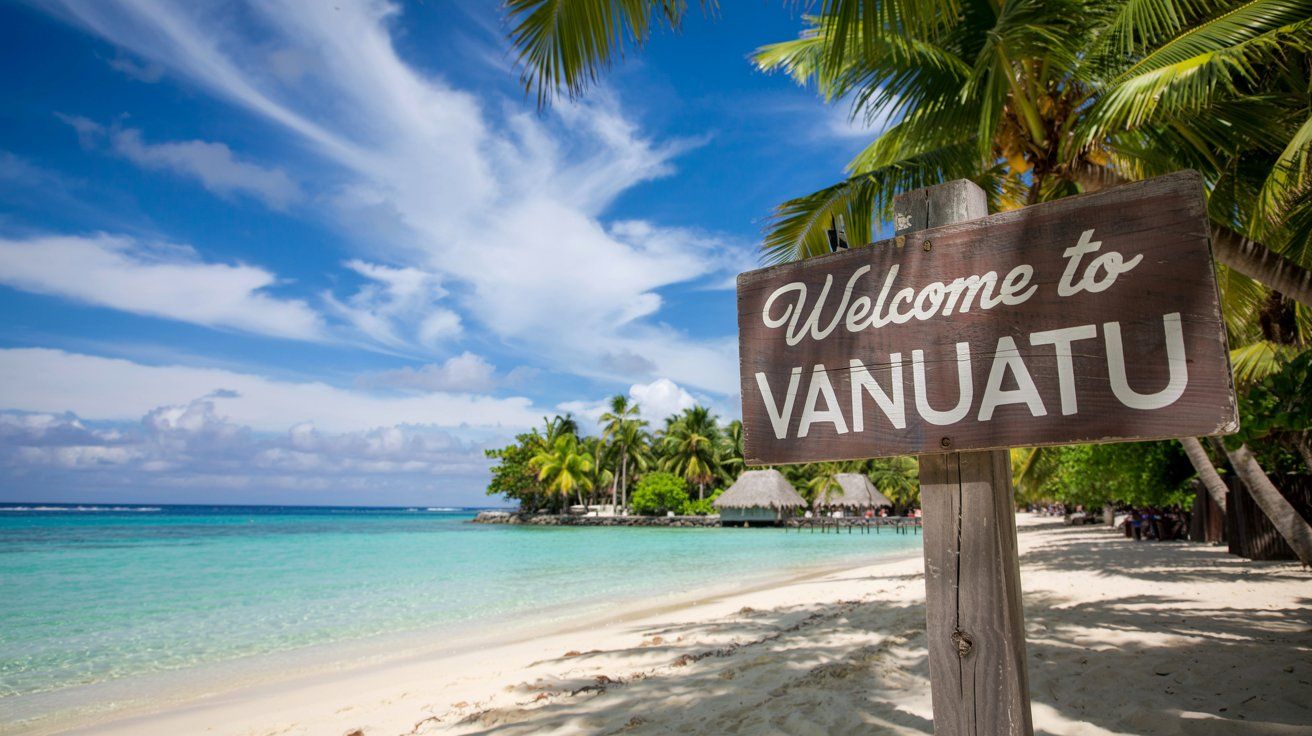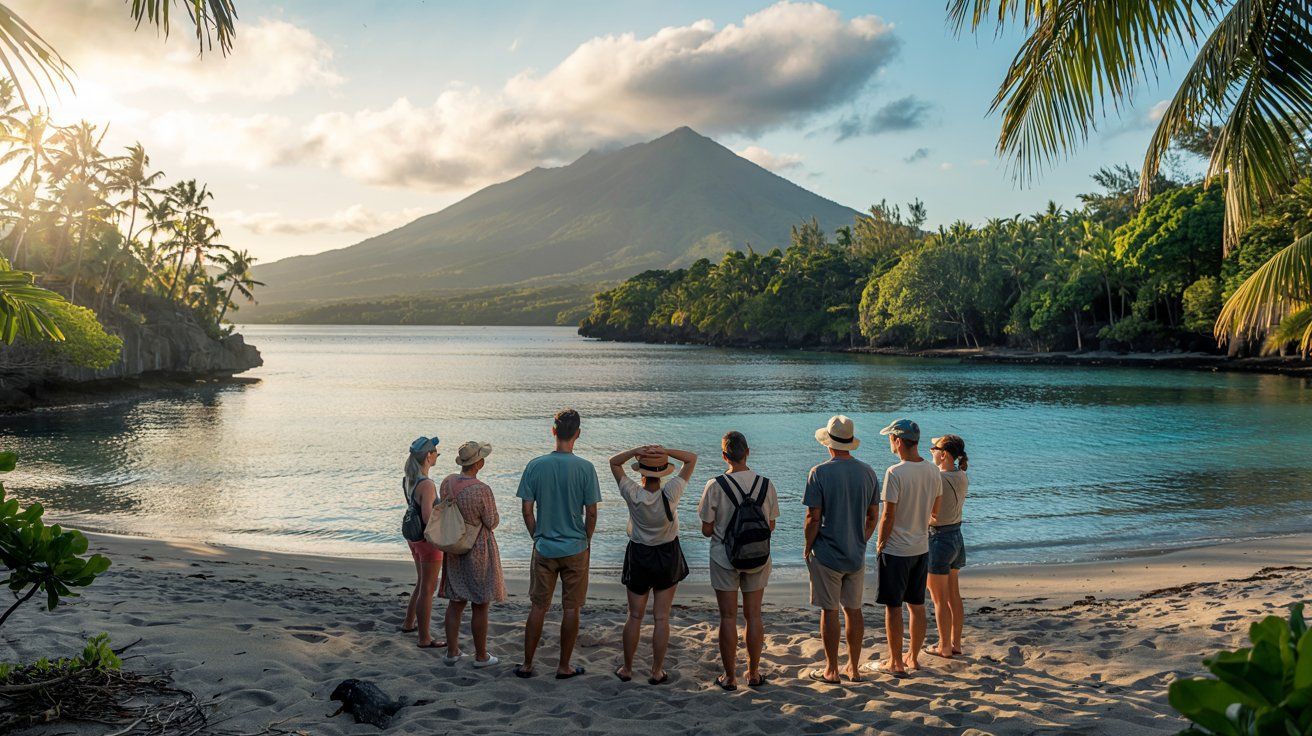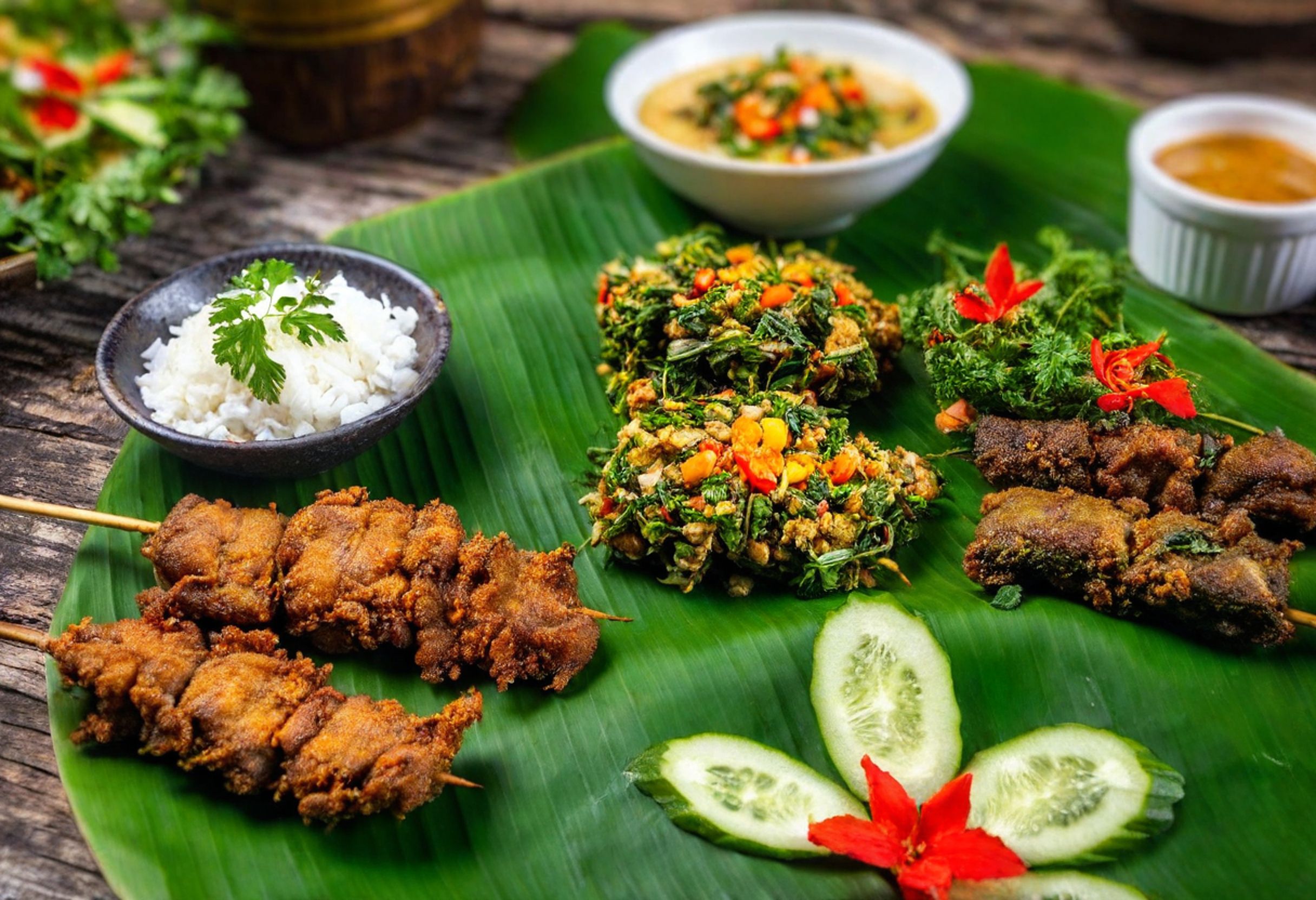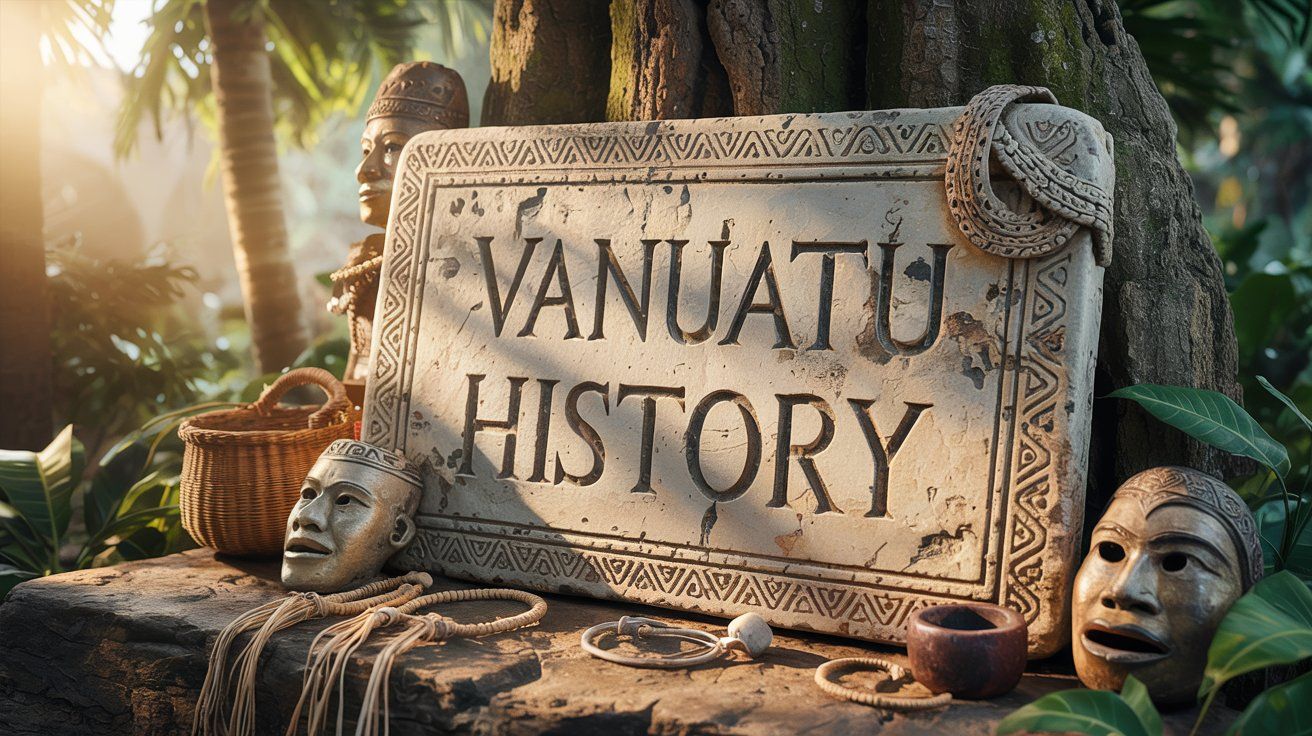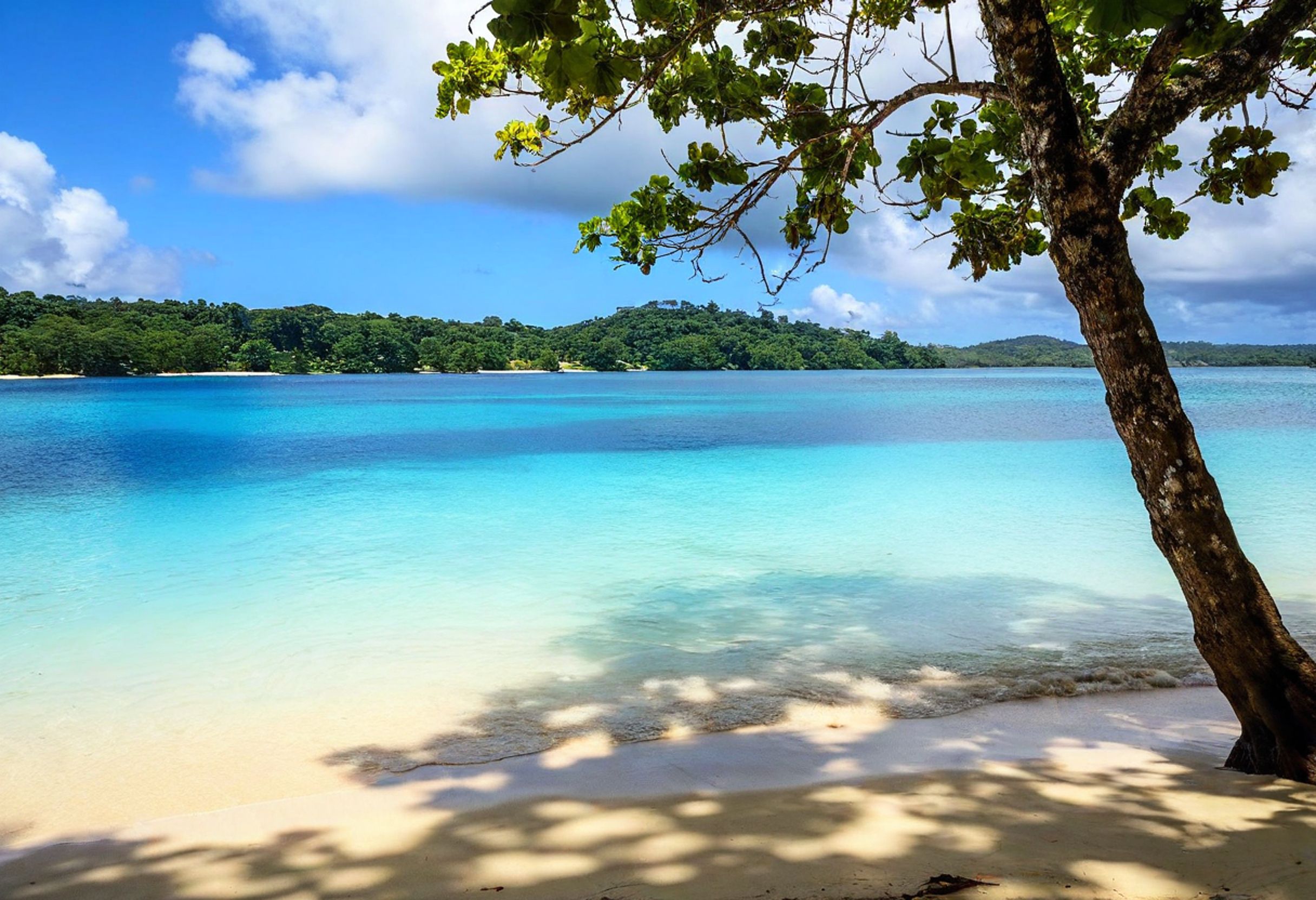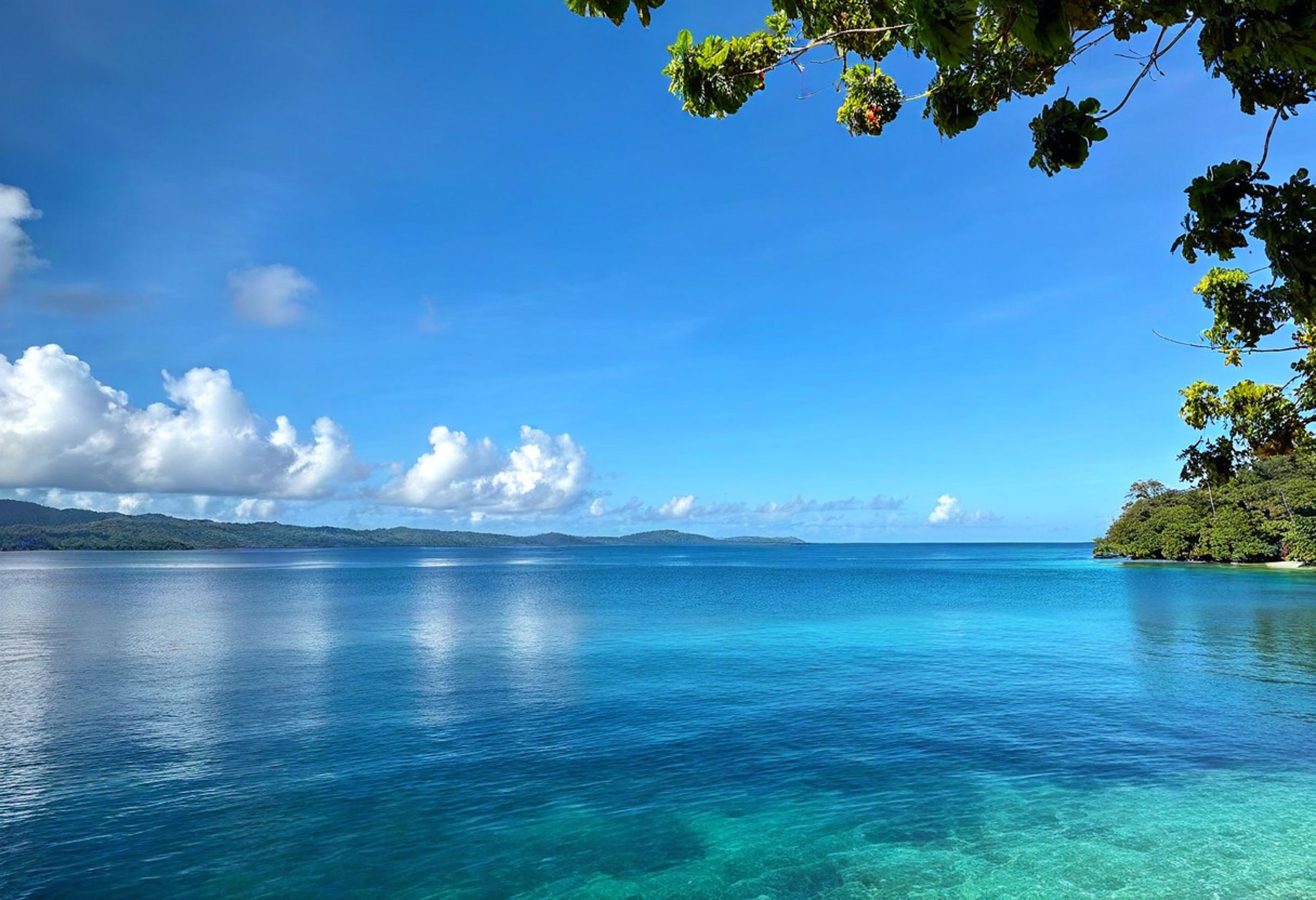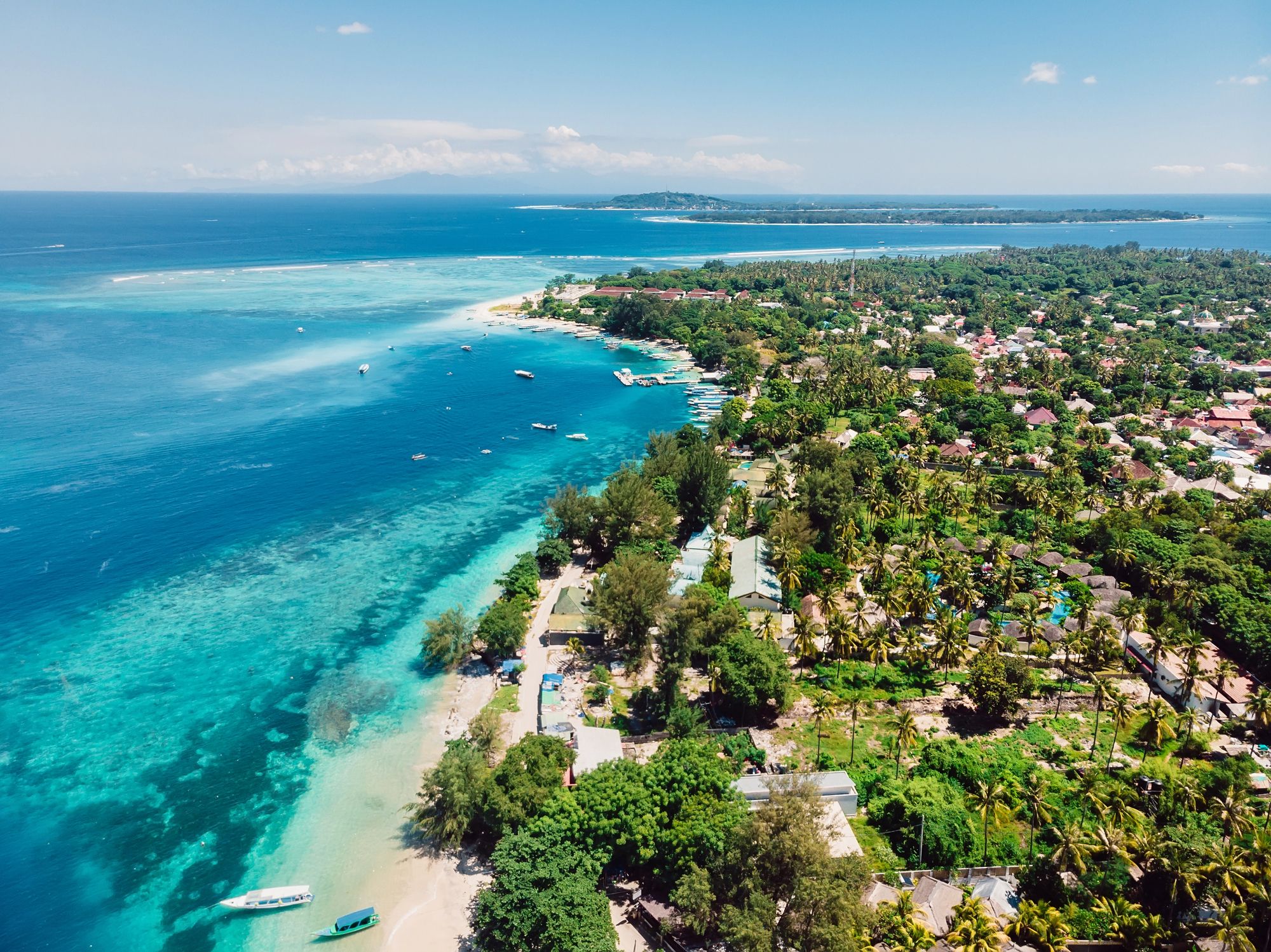Ambrym Island packs a wild mix of volcanic drama and deep-rooted culture, standing out even among Vanuatu’s many islands. Black sand beaches rim the coast, while two active volcanoes—always rumbling—dominate the interior. If you catch a Rom or Maghe dance, you’ll see just how much tradition shapes daily life here.
The best time to visit Ambrym is during the dry season from May to October when weather conditions are most favorable for hiking to the volcanic craters and experiencing local customs. Right now, you’re landing at just the right moment. Clearer skies mean volcano treks are safer, and village visits are more relaxed.
From overwater bungalows to beachfront resorts, find your perfect stay in this island nation of more than 80 islands. Instant booking with best price guarantee!
Browse Accommodations Now
Ambrym doesn’t need weeks to impress. You can hike rainforests, circle crater rims, and join in traditional ceremonies in just a few days. Even if you’re short on time, the island’s collision of natural spectacle and culture deserves a spot on your Vanuatu itinerary.
Getting to Ambrym
Reaching Ambrym takes a bit of effort—international flights, then a domestic hop—but honestly, the adventure just adds to the payoff. If you’re up for a trip to one of Vanuatu’s most fascinating volcanic islands, here’s how you get there.
Flights to Vanuatu
Most travelers arrive in Vanuatu through Bauerfield International Airport in Port Vila. Direct flights come in from:
- Australia: Brisbane and Sydney
- New Zealand: Auckland (weekly)
- Fiji: Nadi (regional hub)
- New Caledonia: Nouméa
Flight times aren’t too bad:
- Brisbane to Port Vila: about 3 hours
- Sydney to Port Vila: around 3.5 hours
- Auckland to Port Vila: just over 3 hours
Air Vanuatu is the main airline, but Virgin Australia and Fiji Airways also have flights. If you want a decent price, booking 2-3 months ahead helps—especially in the busy season from June to September.
Arriving at Port Vila
Port Vila, on Efate Island, is your first stop. After you land at Bauerfield International, you’ll clear immigration and customs—sometimes a bit slow, but usually friendly.
Taxis wait outside the terminal and will get you downtown in about 15 minutes for 1500-2500 vatu ($13-22 USD). Not too painful.
Lots of travelers chill in Port Vila for a night or two before heading out to the islands. There’s a huge range of places to stay, from budget guesthouses to fancy resorts.
This is your chance to grab stuff you won’t find on Ambrym. The central market is great for fresh fruit, and if you need gear for volcano trekking, now’s the time.
Transfers to Ambrym Island
Air Vanuatu runs domestic flights from Port Vila to Ambrym several times a week. The flight’s about an hour and costs around 120 AUD each way.
There are two small airports:
- Craig Cove (west)
- Ulei (east)
Pick your landing spot based on what you want to do. If you’re after volcano hikes, Craig Cove is closer to Ranvetlam, which is where most Mount Marum and Benbow treks start.
Domestic flights fill up fast, so book early. Weather can mess with schedules, so keep your plans a little loose. Most folks stay at least two nights on Ambrym to allow for weather and to finish a volcano hike.
Best Time to Visit Ambrym
The time of year shapes what you’ll see and do on Ambrym. Some months are just better for volcano views and local culture.
Weather and Climate
January and February usually mean nice temps and less rain. These months sit outside the main wet season, so hiking and outdoor stuff feel easier. The island’s tropical climate keeps things warm—expect 75°F to 85°F (24°C to 29°C) pretty much all year.
Wet season is November through April, with March dumping the most rain. If you visit then, afternoon showers are common and volcano treks get muddy fast.
May to October is the dry season—cooler, clearer, and great for photos. Still, bring a light rain jacket; showers pop up when you least expect it.
Volcano Viewing Seasons
Mount Benbow and Mount Marum are open for visits all year, but visibility swings with the seasons. Dry season (May-October) usually means better crater and lava lake views, with July and August being especially clear.
Clouds and rain can block views in the wet months, but honestly, the steam rising when rain hits hot rock is wild—photographers will love it.
Always check current volcanic activity reports before your trek. The situation changes fast, and sometimes access is restricted for safety. You’ll need a local guide no matter when you visit—they know the volcanoes and what’s safe that day.
Where to Stay on Ambrym Island
Ambrym’s places to stay are simple and run by local families. Don’t expect luxury, but you’ll get real island hospitality and a peek at daily life.
Guesthouses and Lodges
Several small guesthouses dot the island. Sea Roar Bungalows sits right on the beach with killer ocean views. Rooms are basic—mosquito nets, shared bathrooms—but clean and breezy.
Ranon Beach Bungalows is up north, literally steps from the sand. The owners cook up fresh seafood and local dishes, and you’ll probably eat together.
Sylline Guesthouse is inland, closer to the volcano trails. It’s nothing fancy, but you’ll sleep well after a hike.
If you want something different, Terter Hot Springs Bungalows lets you soak in natural hot springs right outside. Locals say the water heals, and, well, it sure feels good after a long trek.
Most guesthouses cost $20-40 USD a night. Few are online—try the Vanuatu Tourism Office or call ahead to book.
Camping Options
If you crave more adventure, camping is possible. Some guesthouses let you pitch a tent for $5-10 a night.
Elegant resorts, tropical villas, and vacation rentals with immediate confirmation. Experience a culture dating back to 1,300 BC in this breathtaking archipelago!
See Available Properties
Guided volcano treks often include camping. Local operators provide gear, food, and a guide who knows the land better than any map.
Still, it’s smart to bring your own gear since rentals are scarce. Essentials:
- Decent tent
- Sleeping bag
- Water purification tablets
- Insect repellent
Always get permission before camping on someone’s land. People here are welcoming, but respecting traditional land ownership matters.
For the driest, comfiest camping, aim for May to October.
Ambrym Volcano Adventures
Ambrym’s volcanic heart makes it one of the most intense hiking spots in Vanuatu. Two main peaks and a giant caldera set the stage for some wild adventures.
Climbing Mt Benbow
Mt Benbow isn’t for the faint-hearted, but the payoff is huge. The trek starts early, crossing the caldera’s ash plains. Bring solid boots—the ground shifts from hard lava to loose scree in a blink.
You’ll reach the rim in 3-4 hours. Don’t skip the guide—they’re essential, not just for safety but because trails change with every eruption. If you’re lucky, you’ll spot the lava lake glowing orange far below.
Weather turns fast up here. Pack layers, rain gear, and at least two liters of water. The hike down is quicker but can get slippery, so watch your step.
Exploring Marum Crater
Marum’s crater is wider and, on clear days, gives you a better look at the active lava lake. The hike’s less steep than Benbow but covers more ground.
You’ll cross a stark ash field, then climb up the crater’s edge. Sometimes you can see 400 meters down to the swirling lava. The heat and the chill mountain air make for a strange, unforgettable combo.
Most tours camp near Marum for sunrise or sunset—when the lava glow is unreal. Bring a camera with a good zoom, but travel light since you’ll carry everything yourself.
Ambrym Caldera Expeditions
The Ambrym caldera stretches 12 kilometers and holds both Benbow and Marum. Full expeditions take 2-3 days, camping on the ash plain under star-filled skies.
The landscape looks straight out of a sci-fi movie—black sand, steam vents, and weird mineral colors everywhere. Guides supply camping gear, but you’ll need your own daypack and personal stuff.
Most trips start in Ranon or Port Vato. Expect to pay 25,000-35,000 vatu ($220-310 USD) depending on group size and how long you’re out there. Dry season (May-October) is best for clear views and steady weather.
If you’ve never done a tough hike, be warned—the elevation and rough ground are no joke, even for fit folks.
Other Notable Volcanoes Near Ambrym
Vanuatu has more volcanoes that are worth a detour. Each one feels different, whether you’re chasing adventure or just love wild landscapes.
Yasur Volcano on Tanna
Yasur Volcano, over on Tanna Island, is famous for being crazy accessible. It’s only a 45-minute flight from Port Vila.
Unlike Ambrym’s lava lakes, Yasur puts on a show with strombolian eruptions—lava bursts shoot sky-high every few minutes, especially wild after dark.
Tours here are smooth. You’ll cross ash plains in a 4WD, then walk 10-15 minutes to the crater. Local guides keep an eye on volcanic activity and make sure everyone stays safe.
This volcano’s been erupting for more than 800 years. Locals call it the “Lighthouse of the Pacific”—and when you see it at night, you’ll get why.
Volcanoes on Pentecost
Pentecost Island isn’t as famous for volcanoes as Ambrym or Tanna, but it’s got some dormant volcanic features that are worth checking out.
The island’s bold landscape owes a lot to ancient eruptions. Down south, you’ll stumble across hot springs that locals swear have healing powers. Honestly, after a long hike across the island’s rough trails, a soak sounds pretty appealing.
Pentecost’s volcanic soil is crazy fertile, so you get this wild, lush greenery everywhere, and villages rely on it for their taro and yam crops.
If you’re up for a hike, climb to some of the higher lookouts. The views of steep ridges and deep valleys—carved out by old eruptions—are something else.
Hiking and Nature Experiences
Ambrym Island gives you some of the best hiking in Vanuatu, winding through volcanic landscapes and thick forests. The terrain changes a lot, so there’s something for every kind of nature lover.
Guided Nature Walks
Hiking up Ambrym’s volcanoes—Marum and Benbow—can be tough, but it’s pretty rewarding if you’re up for it. Local guides usually lead these treks, which last two days with a night of camping. They know the safe paths and fill you in on the island’s culture and volcanic history.
Some trails are flat and coastal, others go straight up steep volcanic slopes. No matter what, you’ll want sturdy boots, plenty of water, and a rain jacket (the weather changes fast).
Go in the morning if you can—clouds tend to roll in by afternoon. A lot of guides stop by small villages along the way, so you’ll get a break and a peek at local life.
Exploring Tree Fern Forests
Lower down, Ambrym’s tree fern forests feel almost prehistoric. These huge ferns—some up to 15 feet tall—spread their canopies wide and cast a cool shade.
The volcanic soil lets these ancient plants thrive. Paths through the ferns are usually easier than the volcano hikes, so most people can handle them.
Easy booking across stunning accommodations from luxury resorts to eco-friendly retreats. This Y-shaped archipelago offers pristine beaches, active volcanoes, and world-class diving!
Secure Your South Pacific Getaway
If you’re into birds, keep an eye out for the Vanuatu white-eye and Pacific imperial pigeon. They hang out in these forests a lot.
Guides often point out medicinal plants locals have used forever. The shade is a relief when the midday heat cranks up.
Culture and Local Traditions
Ambrym throws you headfirst into old Vanuatu traditions that are still going strong. The Rom dance, sand drawings, and a good dose of traditional magic all play a big part in daily life.
Black Magic and Ancestral Customs
People call Ambrym the “Black Magic Island”—and not just for fun. Many locals keep up customs handed down for generations, keeping them connected to both ancestors and the land.
Magic isn’t just a story here. In some villages, you’ll meet sorcerers who make protective charms or perform healing rituals. If you hear tales about magic, take them seriously and stay respectful.
The sand drawings are wild—intricate designs drawn in one continuous line, each telling a story or passing on knowledge. UNESCO even recognizes them as cultural treasures.
Tam Tam drums—those hollow logs—are the heartbeat of ceremonies. Their deep rhythms fill the air during dances and special events.
Meeting Chief Paul and Local Leaders
When you visit Ambrym’s villages, chances are you’ll meet a local chief. Chief Paul up north is especially welcoming if you follow the right customs.
Before entering any village:
- Bring a small gift (kava roots work well)
- Wait for formal permission to go in
- Dress modestly—cover shoulders and knees
- Always ask before snapping photos
Chiefs sometimes organize cultural demos and explain traditions. They’ll often share stories about the big volcanoes, especially Mbwelesu, which shapes so much of island life.
If you’re lucky, you might get invited to a kava ceremony. Sharing this root drink is a big deal—it means you’re being welcomed in.
Village Life on Ambrym
Life in Ambrym’s villages moves to rhythms set long ago. Most families live in thatched homes built from local stuff—pretty basic, but it works.
People grow what they eat. You’ll spot villagers tending taro, yam, and manioc, with fishing adding to the menu.
The Rom dance is the island’s cultural showstopper. Dancers wear wild masks and costumes made from banana leaves, bamboo, and whatever else is handy. The dance tells important stories and keeps traditions alive.
Kids pick up traditions by joining in, not through formal lessons. They help with sand drawings and practice dance moves from an early age.
If you’re around during a festival, you’ll see these traditions in full swing. The annual cultural festivals pack in dances, music, and crafts from all over the island.
Food and Culinary Experiences
Ambrym’s food scene mixes traditional Vanuatu cooking with whatever’s fresh and local. You’ll find authentic village meals and a few restaurants with ocean views, all showing off island flavors.
Traditional Laplap Dishes
Laplap—Vanuatu’s national dish—is a must-try here. It’s grated root veggies (usually yam, taro, or manioc) mashed into a thick paste, wrapped in banana leaves with coconut cream and meat or fish, then slow-cooked in an earth oven called a “nakamal.”
On Ambrym, the laplap with flying fox (fruit bat) is a local favorite. If that’s a bit much, chicken or fish versions are easy to find.
Many homestays offer laplap cooking demos. You can jump in and help. It takes hours, but you’ll see how these methods haven’t really changed in generations.
Local Markets
Ambrym’s local markets are small but packed with the island’s best produce. The main market at Craig Cove runs most mornings, selling tropical fruit, root veggies, and seafood caught that day.
Look for local treats—giant yams, wild honey, and “tuluk” (little laplap parcels stuffed with meat). Prices are pretty low, usually 100-300 vatu per item.
The Friday market in Ranon is especially fun. Locals sell homemade coconut oil, woven baskets, and ready-to-eat snacks like banana cake and coconut candy—perfect for a quick bite as you explore.
Markets are also a great place to chat with Ambrym folks. They’ll tell you what’s good and might even share a recipe or two.
Beaches and Relaxation Spots
Ambrym’s coast isn’t your typical white sand paradise. The volcanic terrain gives you distinctive shorelines where you can really unwind without the crowds.
Black Sand Beach Experiences
The black sand beaches here come straight from volcanic activity. The dark sand against the blue ocean is striking, and you’ll often have the place to yourself.
On the east coast, there are little offshore islands with sandy beaches and coral reefs—great for snorkeling or diving. The clear water makes for excellent underwater exploring.
If sunsets are your thing, the west-facing beaches are the spot. The sky lights up and the black sand really makes the colors pop.
Most beaches here are untouched and don’t have facilities—bring what you need. Water shoes help, since the sand gets scorching hot by midday.
Travel Tips for Ambrym
Heading to Ambrym takes a bit of planning. The island’s remote and volcanic, so coming prepared makes all the difference.
Health and Safety on the Island
Pack a basic first aid kit—bandages, antiseptic, painkillers, and any meds you need. The nearest clinics are pretty basic, and anything serious means heading to Port Vila.
Good hiking boots (with ankle support) are a must for the rough terrain. That black sand? It gets insanely hot, so always wear something on your feet.
Stick to bottled or boiled water. Shops don’t always have much, so water purification tablets are smart to have on hand.
Cell reception is spotty at best. Before hiking near volcanoes, let someone know your plans. Renting a satellite phone isn’t a bad idea if you’re going off the grid.
Mosquitoes can be relentless, especially at dawn and dusk. Bring repellent and wear long sleeves and pants when you can.
Hiring an Experienced Guide
A local guide really makes volcano hikes on Ambrym possible. They know the safe paths, keep an eye on the weather, and steer you clear of sketchy spots around Mt. Marum and Mt. Benbow’s craters.
Guide arrangements:
- Book through your guesthouse or reach out to the Vanuatu Tourism Office
- Plan on spending 8,000–12,000 vatu ($70–100 USD) per day
- Double-check what’s included—meals, camping gear, that sort of thing
Guides break down language barriers, since most villagers speak local languages or Bislama, not much English. They’ll also sort out the permissions with village chiefs so you can cross traditional lands without any fuss.
Find available hotels and vacation homes instantly. No fees, best rates guaranteed!
Check Availability Now
The best guides don’t just lead the way—they share stories about Rom dances, sand drawings, and customs you’d probably never stumble on by yourself. Honestly, that cultural exchange might just end up being your favorite part of Ambrym.

